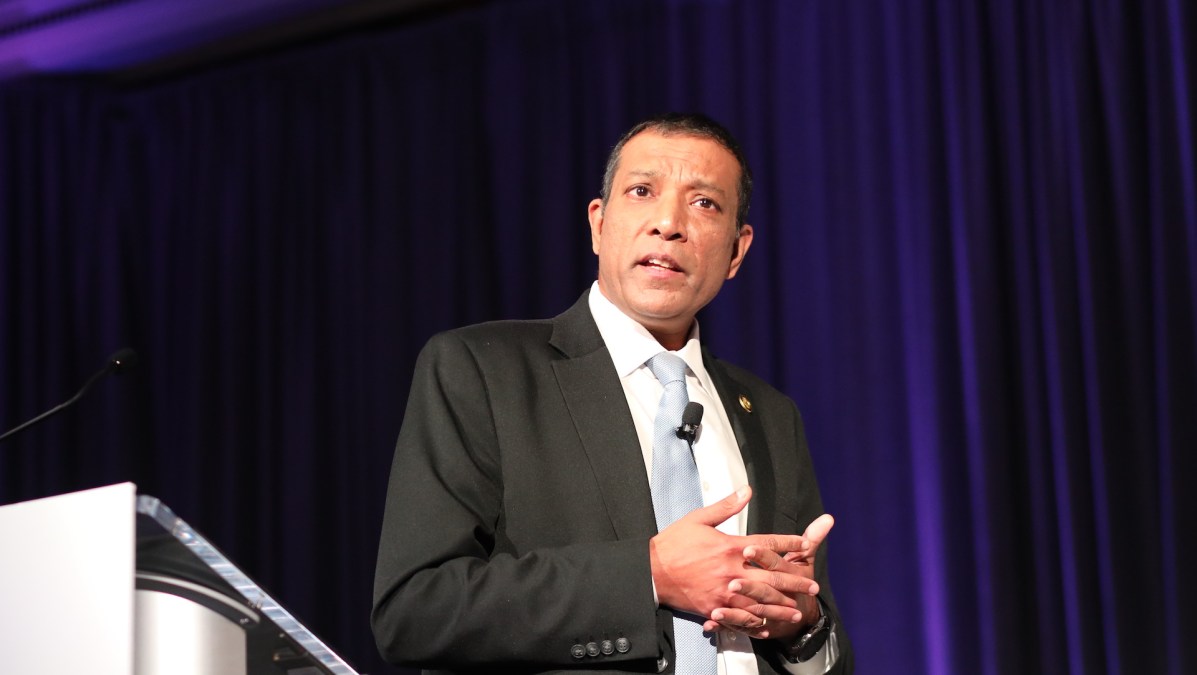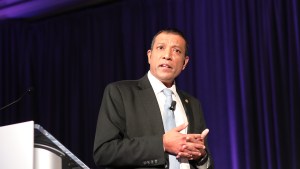Project to converge Army enterprise business systems will be ‘marquee effort’ for CIO

The Army plans to award multiple contracts to industry for IT prototypes that could help the department modernize and integrate its many enterprise business systems.
Overall, the service plans to invest about $1.4 billion in its business systems in fiscal 2023.
“Our marquee effort in ‘23, though, is going to be our implementation or initial prototyping for our new enterprise business systems convergence. And this is our modernization of our business systems across the Army to essentially modernize 20-year-old legacy ERP [enterprise resource planning] systems,” Army CIO Raj Iyer told reporters Thursday.
“In order to support contested logistics in the future … we need the best technology and the best business systems to be able to provide us, you know, both financial management and logistic support to the field,” he said.
The portfolio the Army is looking at upgrading currently includes five ERPs and about 150 other non-ERP legacy systems.
“We’re trying to converge them into a single architecture, into a single system if we can, to the best extent possible so that we have one integrated capability” that can pass data across the spectrum of operations for analytics and other tasks, he explained.
The Army will use other transaction agreements (OTAs) for the acquisition. OTAs are intended to cut through bureaucratic red tape and facilitate faster prototyping of new technologies and follow-on production contracts.
The plan is for the program executive office for enterprise information systems to hold an industry day and release a request for white papers this summer.
The Army expects to award multiple OTAs for prototyping efforts in early fiscal 2023.
“These would run anywhere from 12 to 18 months. And then at the end of that effort … we will get to a production contract by down selecting, you know, one of those prototypes to be our production solution,” Iyer said.
Some of the things the Army will be looking at include how modular and “future proof” a proposed architecture would be, as well as its ability to support data exchange through application programming interfaces and microservices.
“This again will help us make sure that interoperability with other systems. And to be able to use that data seamlessly across other systems and analytics is a huge driver. We’ll be looking at the system being cloud-native from the get-go and making sure that we can fully benefit from a true modern architecture. And then … we’ll be looking at how flexible the solution will be in terms of its ability to implement Army-unique processes wherever we have them without the need to customize commercial off-the-shelf products,” he said.
The Army seeks agility, and it will be pushing industry to use DevSecOps for new capability increments.
“We are looking for functionality to be available or released to users … on, you know, rapid sprints” every two-to-six months, Iyer said. “This is all about getting functionality in the hands of the user rapidly through agile development.”
However, the overall modernization effort will be “massive” and could take up to 10 years to implement, he said.
“We’re not going with the big bang approach,” Iyer said. “We will let the functional priorities define … what those increments will be, and then we will look at the risk profile to look at how quickly we can get those turned on. And that will determine the level of funding and the timeline for implementation.”






